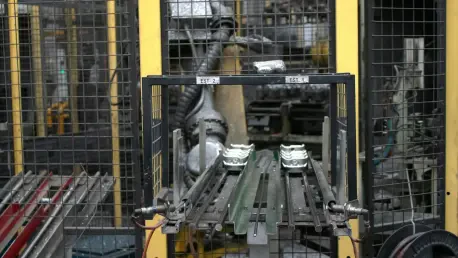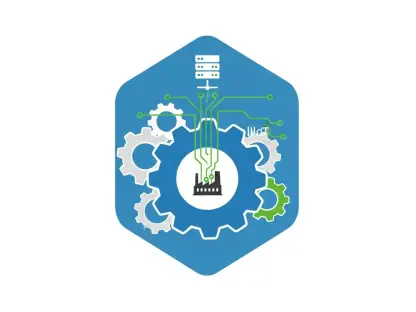Imagine a nation once heavily reliant on foreign arms transforming into a powerhouse of indigenous defense production, with annual output soaring to ₹1,50,590 crore, a staggering figure that represents India’s remarkable stride in the defense sector, positioning it as a potential global leader. This journey from dependency to self-reliance is not just a statistic but a narrative of strategic vision and collaborative effort. This roundup dives into diverse opinions, expert analyses, and industry perspectives to explore how India is carving out a significant space in the global defense manufacturing landscape. The purpose is to synthesize varying viewpoints on key drivers, challenges, and future potential, offering a comprehensive look at this transformative shift.
Key Drivers Behind India’s Defense Manufacturing Growth
Record Production Milestones: A Symbol of Industrial Prowess
India’s defense production reaching ₹1,50,590 crore in the current fiscal year marks an 18% increase from the prior year, reflecting a robust industrial base. Industry analysts highlight this achievement as evidence of a maturing ecosystem capable of meeting domestic needs with greater efficiency. The consistent upward trend over recent years is often attributed to enhanced manufacturing capabilities and a renewed focus on scaling output.
However, not all views align on the implications of such rapid growth. Some sector observers caution that sustaining this pace requires addressing bottlenecks in infrastructure and skilled labor. They argue that while the numbers are impressive, ensuring quality alongside quantity remains a critical concern for long-term credibility in global markets.
A contrasting perspective from manufacturing leaders emphasizes optimism, pointing to the potential for technological advancements to bridge existing gaps. They suggest that investments in automation and digital tools could further propel production capacity, ensuring India remains competitive. This diversity in thought underscores the complexity of scaling an industry under global scrutiny.
Policy Reforms: Fueling Self-Reliance with Strategic Vision
Government initiatives like Atmanirbhar Bharat and Make in India have been pivotal in reshaping India’s defense landscape since their inception. Policy experts widely agree that these frameworks have instilled confidence among local manufacturers by prioritizing domestic procurement. The shift toward reducing import reliance is seen as a strategic move to bolster national security and economic stability.
Yet, there are differing opinions on the effectiveness of policy implementation. Certain analysts point out that bureaucratic hurdles and delays in execution sometimes hinder the intended outcomes. They advocate for streamlined processes to ensure that small and medium enterprises can fully capitalize on these initiatives without facing regulatory roadblocks.
On the other hand, some government advisors argue that the policies have already yielded tangible results, as evidenced by increased local production commitments. They believe that with incremental reforms, particularly in easing business norms, India can further diminish its dependence on foreign defense systems. This debate highlights the need for continuous policy refinement to sustain momentum.
Collaborative Dynamics: Balancing Public and Private Contributions
The partnership between public and private sectors is often cited as a cornerstone of India’s defense growth, with public sector units contributing 77% of production and the private sector’s share rising to 23%. Industry commentators note that this synergy brings together the stability of public enterprises with the innovation-driven approach of private players. Such collaboration is viewed as essential for diversifying the defense portfolio.
Regional disparities in industrial growth, however, spark varied opinions. Some regional business leaders express concern that certain areas lag in infrastructure development, limiting their contribution to the national effort. They call for targeted investments to ensure equitable growth across different states, fostering a more inclusive industrial base.
Conversely, a growing number of private sector advocates argue that their increasing role signals a shift toward more agile and niche technology development. They challenge the notion that public dominance guarantees stability, suggesting that private innovation could soon redefine traditional models. This evolving dynamic continues to shape discussions on the future structure of the sector.
Export Success: Establishing a Global Footprint
Defense exports hitting ₹23,622 crore with a 12.04% rise in the latest fiscal year have positioned India as an emerging player on the global stage. Trade experts commend this growth as a sign of increasing international trust in Indian-made defense systems. They point to strategic partnerships and market penetration in regions like Southeast Asia and the Middle East as key factors.
Comparative analyses with other exporting nations reveal mixed perspectives. Some global market analysts suggest that while India’s trajectory is promising, it still lags behind established players in terms of volume and technological sophistication. They recommend focusing on high-value systems to compete effectively in saturated markets.
A more optimistic view from export consultants highlights untapped potential in emerging markets where cost-effective solutions are in demand. They propose that aligning export strategies with indigenization goals could create a unique niche for India, enhancing its global reputation. This blend of caution and confidence frames the ongoing conversation about India’s international ambitions.
Strategies to Sustain and Amplify Growth
Maintaining the current momentum in India’s defense sector requires actionable strategies, as suggested by various stakeholders. Incentivizing research and development stands out as a priority, with many industry voices urging greater funding allocations to foster innovation. Streamlining procurement processes is another recurring recommendation to reduce delays and enhance efficiency for both public and private entities.
International collaboration also garners significant attention in expert discussions. Building alliances with technologically advanced nations could accelerate knowledge transfer and market access, according to global defense strategists. They emphasize the importance of joint ventures and co-production agreements as pathways to elevate India’s standing in the supply chain.
Practical insights for stakeholders focus on navigating the regulatory landscape. Advisors suggest that staying updated on policy changes and investing in emerging technologies like artificial intelligence and drones can provide a competitive edge. These strategies collectively aim to solidify India’s position while addressing internal and external challenges through a balanced approach.
Reflecting on India’s Defense Transformation
Looking back, the insights gathered from diverse perspectives paint a vivid picture of India’s ascent in defense manufacturing. The record production figures, policy-driven self-reliance, collaborative ecosystems, and export achievements are celebrated as milestones of a nation redefining its global role. Varied opinions on challenges like infrastructure gaps and policy execution offer a nuanced understanding of the hurdles overcome.
Moving forward, stakeholders are encouraged to prioritize innovation through sustained R&D investments and to advocate for policies that bridge regional disparities. Exploring deeper international partnerships is seen as a vital step to enhance technological capabilities and market reach. These actionable considerations aim to ensure that India’s journey from dependency to leadership continues with unwavering momentum, shaping a resilient future for the defense sector.









